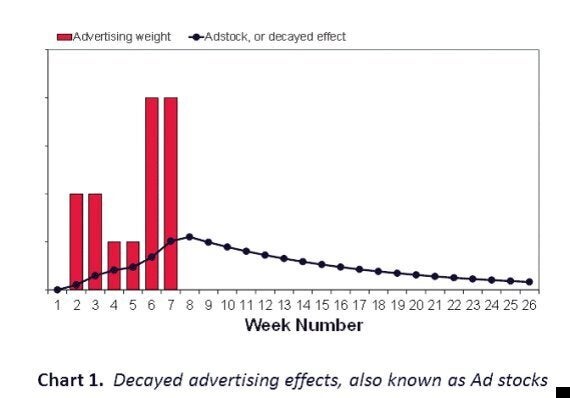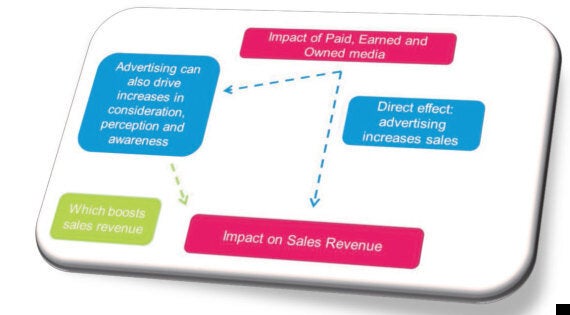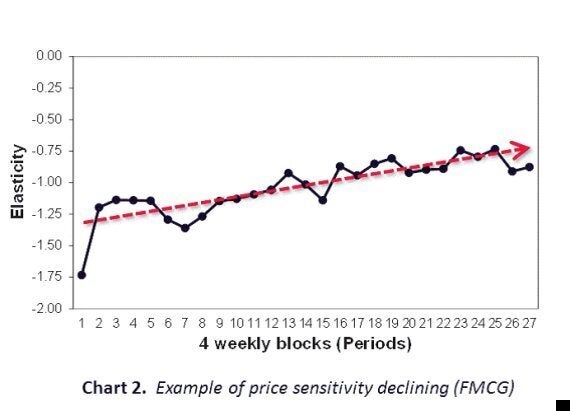There are well-established techniques to accurately track the effectiveness of short-term advertising, but what about meaningful measurement over longer periods of time? Some think it impossible, others do it inaccurately, but I believe there's a way to get it right.
Firstly, I must stress the importance of a floating base. When talking about the long-run effect of advertising I'm referring to the rate a brand can acquire new regular/loyal customers and regain lapsed ones vs. the rate at which customers lapse and defect to other brands. With short-term measurement methods the base is always static, which can never accurately reflect changes in perceptions, tastes and attitudes. To measure the long-term effect of advertising we must first find a method that allows the base to evolve over time.
So what are the existing measurement methods? Market mix modelling or econometric analysis is used to isolate the movements in a particular KPI. While effective in the short-term, it's not always geared towards understanding long-term impacts - often simply calculated as twice that of the short-term. At best this is an oversimplification, at worst dangerously misleading.
The most obvious approach to tackle this problem is simply to allow advertising to have an impact on sales for a longer time period. Then, by studying decayed advertising effects, any additional impacts can be identified. The chart below shows how this test might be constructed.

The problem with this approach, however, is that you often need one factor to describe the short-term and another to describe the long-term, leading to model specification issues, hence the "long-term being twice the impact of the short-term" answer.
Another potential solution is by looking at brand equity. It is possible to draw some understanding how your advertising is working over long periods, thereby establishing which combination of media channels best moves brand equity, allowing you to plan your activity accordingly - as shown in the flow diagram beow.

There are however three problems. This data is often not available. Even if it is, definitions change over time. More importantly, this method does not directly allow the base to change over time. While helpful, this doesn't actually fix the fundamental problem of a static base.
Price elasticity presents a similarly interesting but limited solution. In a world of growing commoditisation and prevalence of low-cost and private-label alternatives it's hard to imagine a situation where price sensitivity to a product would fall over time, therefore if price elasticities move closer to zero, you could argue this is due to the long-term impacts of marketing. Many case studies show this phenomenon, one of which can be seen below.

Here the market was competitive, with both private label and branded alternatives available, yet sensitivity to price fell over a number of years. Marketing was de-sensitizing consumers to price over a long period of time. While producing interesting results, this method can't be applied across the board. Most of all, it doesn't allow the base level of sales to change.
So, what is the solution? I believe we can now successfully measure the hidden effects of advertising over long periods by using Unobserved Component Modelling techniques. This method explicitly allows the base to evolve over time, can be tested in all circumstances and does not rely on data that might not be available. This complex, dynamic approach accurately allows you to establish whether there is a long-term effect; identify it, quantify it and correctly up-weight the ROI; and understand which factors are driving the long-term effect. It ticks all the boxes.
A wealth of case studies suggest it is unwise to use simple rules of thumb. A sample of more recent results shown in the chart below reveals long-term multipliers ranging from one out to eight where the size and colour of the "bubble" indicates the multiplier found for 30 different brands.

Looking at the circled area, the danger of simply multiplying the effect is clear. All have similar media spends and short-term ROIs but vastly different multipliers to get to the long-term.
Clearly inaccurate measurement is not worth having. At best it's unhelpful; at worst it can lead you in the wrong direction. Accurate measurement however, particularly over long periods, has the potential to revolutionise your results.
